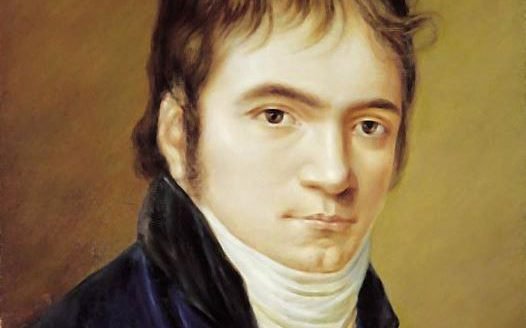
Beethoven Op 18, No. 5: Part III
Beethoven’s Op. 18, No. 5 quartet concludes with a thrilling final movement that masterfully combines energy and elegance. From its lively opening theme to the Mozart-inspired chorale and a breathtaking coda, this finale showcases Beethoven’s youthful brilliance and pays homage to his great predecessor. Dive into our detailed analysis to uncover the intricate musical dialogues and contrasts that make this movement a standout.

Beethoven Op 18, No. 5: Part II
In the third movement of Beethoven’s Op. 18, No. 5 Quartet, the composer takes a simple theme on an extraordinary journey through a set of contrasting variations. With each new section, Beethoven reveals the theme’s hidden depth by transforming it into textures both delicate and dynamic, contemplative and joyful. Join us as we explore how Beethoven weaves his signature inventiveness and contrasting moods into this captivating Theme and Variations.

Beethoven Op 18, No. 5: Part I
In his Op. 18, No. 5 quartet, Beethoven takes inspiration from Mozart’s K. 464, blending elegance with lively energy. Across the first two movements, he balances playful themes, graceful dances, and subtle moments of tension, creating a work that’s as much a tribute as it is uniquely Beethoven.

Beethoven Op. 18, No. 5: An Introduction
In the late 18th century, the string quartet emerged as a pinnacle of musical expression for composers. Beethoven, inspired by the masterpieces of Haydn and Mozart, set out to craft his own distinctive voice within the genre. In this post, we introduce Beethoven's String Quartet in A major, Op. 18, No. 5, exploring its historical context and the influences of Mozart. Read more to discover how this remarkable work pays homage to the greats while signaling Beethoven's innovative spirit, setting the stage for his revolutionary contributions to classical music.

Fantastic finale
Beethoven’s finale to his first published quartet (Op. 18, No. 1) is a thrilling ride that is bursting with musical ideas, exciting contrapuntal passages, and surprises galore. It is a fitting finish to this glorious quartet that shows versatility, humour, surprise, and deep emotion.

Humour and Surprise
The Scherzo of Beethoven’s Op 18, No. 1 is a whirlwind of fast-moving surprises and musical humour. He subverts our expectations with off-beat accents and daring harmony. Learn about the details of this charming movement.

Passion and expression
The second movement of Beethoven’s Quartet in F major transports us to another world. We are no longer in sunny F major; we are in a dark and tumultuous D minor. With is mournful melodies, impassioned outbursts, and deafening silences, Beethoven explores tragedy, loss, and terror in this excellent early example of emotional exploration in music.

Con Brio: Beethoven’s Second Quartet
This F major quartet (Op. 18, No. 1) is probably the most famous and most beloved quartet of the series of six. It is the longest of the set; the first and last movement being longer than any corresponding movement in the opus. The slow movement has the most emotional range of any other slow movement in the series. And the scherzo is the fastest and most harmonically daring.
It’s an exciting work, so let’s look at some examples from the first movement, marked Allegro con brio (lively with vigour).

Beethoven’s First Quartet
In 1787, at the age of 17, Ludwig van Beethoven left his native Bonn, Germany to travel to the musical epicentre of the world: Vienna. In going there, he had intended to study with Wolfgang Amadeus Mozart. Unfortunately, Beethoven’s Viennese séjour was cut short to only two weeks when he was abruptly called back home because of his mother’s death. Before he could return to Vienna a few years later, Mozart had met his untimely demise.

